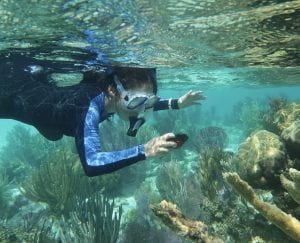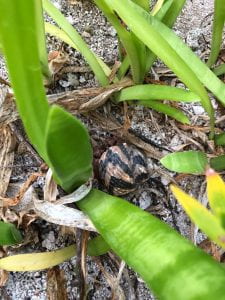(Never thought I’d say this but…) it was nice to sleep in today now that breakfast is at 7:00am! Today is our first day working on the reef! The class went out to the coral graveyard to practice the point-intercept and quadrad methods of conducting surveys, then examined coral skeletons taken from the coral graveyard. We attempted to identify the coral skeletons species or at least genus; we identified a range of corals including Pseudodiploria, Colpophyllia nattans, Agaricia, Pendrogyra cylindris, Acropora palmata, Gorgonia ventalina, Siderastrea, and Fabullata. There is so much variety in corals and coral structure on the macro and micro levels, yet corals are deceptively hard to tell apart, especially when it comes down to specific species.
Later in the day, we utilized the quadrad method on sea-grass and algae. Cassia and I developed a set of hand-signals to communicate data under water that enabled us to complete the transects relatively quickly. Using tools under water was a surreal experience! First, we had to swim over to the sand bar within the sea-grass/algae area carrying our bulky PVC quadrads, transect tapes, and clipboards for recording data. Writing under the water with water-proof paper and pencil was a novel experience for me, and its a technique that we will be utilizing a lot in the coming days. At the patch reef, I saw several yellowtail snappers, and a nurse shark (the couch potato of the ocean)! Hopefully, we will see more piscivorous fish in the coming days.
We ended the night with lectures on echinoderms (go sea cucumbers!), green and red algae, and mangroves and seagrass beds (their relevance and importance to coral reefs).


